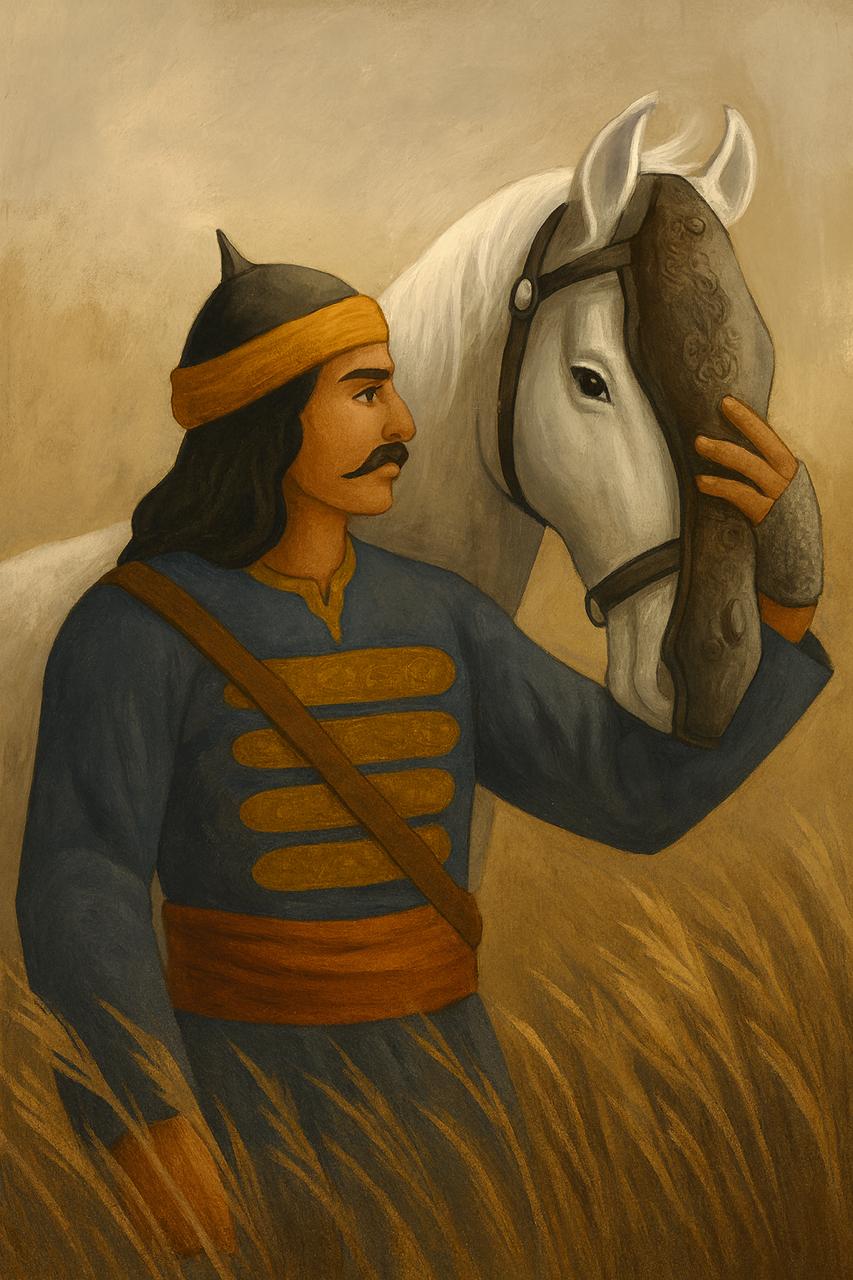
Chetak: The Story of Maharana Pratap’s Loyal Companion
Share
In the golden dust of Rajasthan, where the Aravallis whisper stories to the wind and the land remembers everything, there once galloped a horse who would never be forgotten. His name was Chetak.
Not just a steed, not merely a mount — Chetak was a creature of myth, muscle, and meaning. A Marwari stallion, with ears curled like a crescent moon and a coat touched by grey-blue light, he stood with the quiet confidence of the desert itself. There are horses, and then there are the ones sung about for centuries. Chetak belonged to the latter.
His story begins, and lives on, not in dusty archives but in folk songs carried on the breath of elders, in poems recited in village courtyards, in ballads passed down by the Charans, and in shrines where silence says more than stone. In the Khummana Raso, a poetic chronicle born in the 18th century, he is named — but his legend was alive long before, carried in the hearts of those who never needed ink to remember.
He rode with Maharana Pratap, the unyielding Rajput king of Mewar who chose dignity over submission, sovereignty over comfort. While rulers across the land made their peace with an empire, Pratap remained defiant. In that defiance, Chetak was not just present — he was essential.
The world remembers Haldighati, the battle where this bond faced its greatest trial. The year was 1576. The enemy — mighty, many, and magnificent. And yet, Chetak ran. Through arrows, through dust, through the roar of elephants and the cry of men, he carried his rider not with fear but with fierce clarity. Wounded by an elephant’s tusk, his leg torn and bleeding, he didn’t stumble — he surged. And when the moment came, with no more strength than devotion itself, he leapt across a deep river gorge, a leap now etched into the geography of legend.
He reached the far bank. His master safe. Then, with the grace of a falling petal, he collapsed and died.
Chetak’s death was not a loss. It was a gift. A final act of loyalty so profound that the people of Mewar built no palace in his name, no temple of grandeur—only a stone samadhi at Balicha near Haldighati, where the earth still remembers. Today, travelers pause not just to look, but to feel. To understand what it means to be remembered for how you stood, not what you wore.
In the stories still sung in Rajasthan’s villages, Chetak is “neela ghoda”—the blue horse. Some say his coat truly shimmered blue in the sun; others say his spirit was simply too rare for earthly colors. British officer James Tod, in his 19th-century Annals and Antiquities of Rajasthan, wrote of him with reverence, repeating the tales told to him by those who knew the songs better than scripts.
And so he lives—in lok geet, in murals, in statues, in the quiet pages of Amar Chitra Katha, and most importantly, in the soul of a land that never forgets its heroes. Not every hero holds a sword. Some gallop forward, even with a broken leg.
Chetak’s legacy is not one of victory but of nobility, devotion, and silent strength. The kind that does not boast but stays. This is the kind that dares to take risks, even when it is aware that it will not succeed.
